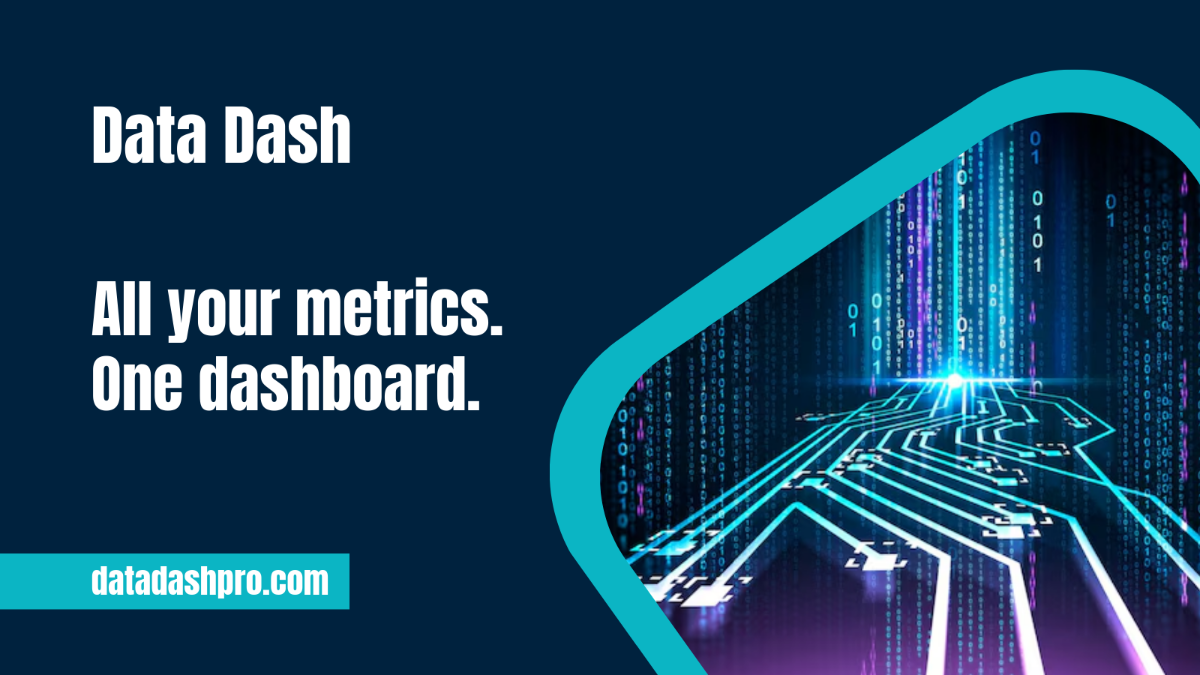Digital Advertising User Guide
Introduction
Welcome to [Your Company Name]'s User Guide for Digital Advertising! This guide serves as a vital resource, providing you with in-depth insights and practical steps to navigate the complex world of digital advertising. Whether you are new to digital advertising or looking to enhance your existing strategies, this guide offers a structured approach to planning, executing, and optimizing your digital advertising efforts.
We cover everything from basic concepts and terminology to advanced campaign management techniques, ensuring a comprehensive understanding of digital advertising. Embrace this journey into digital advertising with us, and unlock the full potential of your advertising campaigns.
Understanding Digital Advertising
Digital advertising is an integral part of any modern marketing strategy. It involves leveraging digital platforms to promote products or services to a targeted audience. The digital realm offers unparalleled opportunities for precision, interactivity, and data-driven decision-making.
Key Terms and Concepts
To navigate the digital advertising landscape effectively, it's crucial to understand the following key terms and concepts:
CPC (Cost Per Click): This metric represents the cost you pay each time a user clicks on your ad. It's essential for managing budget and understanding the direct engagement of your ads.
CPM (Cost Per Thousand Impressions): CPM is used to denote the price of 1,000 ad impressions on a webpage. It's a crucial metric for campaigns focused on brand awareness.
CTR (Click-Through Rate): CTR is a vital performance metric that measures the percentage of impressions that led to a click. It's an indicator of how effective your ad is in capturing attention.
Conversion Rate: This measures the percentage of users who take a desired action (like making a purchase or signing up for a newsletter) after clicking on your ad.
ROI (Return on Investment): ROI helps in assessing the profitability of your advertising efforts. It compares the revenue generated from your ads against the cost of running those ads.
Engagement Rate: A measure of how users interact with your ads, including likes, comments, shares, and other forms of social interaction.
Digital Advertising Platforms
Understanding the variety of platforms available for digital advertising is key to determining where your efforts will be most effective:
Social Media Platforms: Platforms like Facebook, Instagram, Twitter, and LinkedIn offer targeted advertising options, allowing you to reach specific audiences based on demographics, interests, and behaviors.
Search Engines: Google Ads and Bing Ads are prominent platforms for search engine marketing (SEM). They allow you to place ads in search engine results, targeting users based on their search queries.
Email Marketing: A direct form of marketing where personalized content is sent to a list of subscribers or potential customers.
Display Networks: These networks place your ads on a variety of websites across the internet, targeting users based on their browsing behavior and interests.
Programmatic Advertising: This automated form of advertising uses AI algorithms to buy and optimize digital campaigns, rather than traditional manual bidding.
Video Advertising: Platforms like YouTube offer video advertising options, which can be highly engaging and effective for brand storytelling.
Native Advertising: This involves creating ads that match the look, feel, and function of the media format where they appear, often found in social media feeds or as recommended content on a webpage.
Affiliate Marketing: A performance-based advertising strategy where you pay commissions to external websites for traffic or sales generated from their referrals.
By understanding these platforms and key concepts, you are well-equipped to craft an effective digital advertising strategy that aligns with your business goals and resonates with your target audience.
Setting Up Your Campaign
Setting up a successful digital advertising campaign involves careful planning and strategic decision-making. This section provides a detailed roadmap to guide you through the process of creating impactful and effective digital advertising campaigns.
STEP | DETAILS |
|---|---|
Defining Campaign Objectives | Before embarking on any campaign, it's crucial to establish clear and measurable objectives. Objectives can range from increasing brand awareness and generating leads to boosting sales and improving customer engagement. Align these objectives with your overall business goals to ensure a coherent marketing strategy. |
Identifying Your Target Audience | Understanding your target audience is key to the success of your digital advertising campaign. Consider factors such as demographics, psychographics, and behavior. Utilizing tools like customer personas and market research can provide deep insights into your audience's needs and preferences. |
Crafting Your Message | Your advertising message should resonate with your target audience and reflect your campaign objectives. It should be clear, compelling, and convey the unique value proposition of your product or service. Tailor your message for different segments of your audience for a more personalized approach. |
Choosing the Right Platforms | Selecting the appropriate platforms is crucial for reaching your target audience effectively. Based on your audience analysis and campaign objectives, choose from a variety of platforms such as social media, search engines, email, and display networks. Consider platform-specific formats and best practices to optimize your campaign's performance. |
Budgeting and Bidding | Determining your budget is a critical step in campaign planning. Allocate your budget based on the expected ROI and the cost structures of your chosen platforms. Adopt a bidding strategy that aligns with your campaign goals and budget constraints. Regularly review and adjust your budget allocation based on campaign performance data. |
Creative Development | Develop creative elements that are aligned with your campaign message and designed to capture the attention of your target audience. This includes visuals, ad copy, and calls-to-action. Ensure that your creatives adhere to the specifications and best practices of the chosen platforms. |
Setting Up Tracking and Analytics | Implement tracking mechanisms to monitor the performance of your campaign. Use tools such as Google Analytics, UTM parameters, and platform-specific analytics to measure key performance indicators like CTR, conversion rate, and engagement. This data will be crucial for evaluating the success of your campaign and making informed adjustments. |
Compliance and Legal Considerations | Ensure that your campaign adheres to legal standards and platform-specific policies. This includes data privacy regulations, advertising standards, and intellectual property laws. |
By following these steps, you will be well-equipped to set up a digital advertising campaign that is strategically planned, audience-focused, and poised for success. Remember, ongoing optimization based on performance data is key to maximizing the effectiveness of your digital advertising efforts.
Campaign Execution and Management
Executing and managing a digital advertising campaign is a dynamic process that requires attention to detail, adaptability, and continuous optimization. This section provides a step-by-step guide to effectively manage your campaigns from launch to completion.
Launching the Campaign: After careful planning and preparation, it's time to launch your campaign. Ensure all elements of the campaign, including ads, landing pages, and tracking systems, are thoroughly tested and functioning correctly. Set a launch date and time that aligns with your audience's online behavior for maximum impact.
Monitoring Performance: Once your campaign is live, monitor its performance closely. Use real-time analytics tools to track key metrics like impressions, clicks, CTR, conversion rate, and ROI. Pay attention to how different elements of your campaign, such as specific ads or targeting criteria, are performing.
Optimizing the Campaign: Based on the performance data, make informed decisions to optimize your campaign. This may include adjusting ad copy, refining targeting, changing bidding strategies, or reallocating budget. Optimization is an ongoing process and is key to improving campaign performance over time.
A/B Testing: Conduct A/B testing by creating different versions of your ads or landing pages to see which performs better. Test one variable at a time, such as headlines, images, or call-to-actions, to identify what resonates best with your audience.
Managing Budget and Bids: Continuously manage your budget and bids to ensure they align with your campaign goals and market conditions. Adjust your bids based on the performance of keywords, ad placements, or audience segments. Be proactive in budget reallocation to capitalize on high-performing aspects of your campaign.
Responding to Feedback and Trends: Stay attuned to feedback from your audience and emerging market trends. Engage with your audience through social media or customer support channels to gather insights and foster positive relationships. Be prepared to adapt your campaign strategy in response to market shifts or customer feedback.
Reporting and Analysis: Regularly generate detailed reports to analyze the performance of your campaign. These reports should include key metrics, insights, and recommendations for future campaigns. Share these reports with stakeholders to demonstrate the value and impact of your digital advertising efforts.
Post-Campaign Review: After the campaign concludes, conduct a comprehensive review. Analyze what worked well and what didn’t. Gather learnings to inform future campaigns and continuously refine your digital advertising strategy.
Executing and managing a digital advertising campaign effectively involves a balance of strategic planning, real-time monitoring, ongoing optimization, and post-campaign analysis.
Data and Analytics
Data and analytics are the cornerstones of campaign success. They are to provide invaluable insights that inform decision-making, enable precise targeting, and facilitate the measurement and optimization of campaign performance.
Utilizing Analytics for Campaign Insights: Data analytics plays a pivotal role in understanding and improving the performance of your digital advertising campaigns. It involves the collection, processing, and analysis of data to gain insights into user behavior and campaign effectiveness. Key steps include:
STEP | DETAILS |
|---|---|
Data Collection | Implement tools to collect data from various sources like website traffic, ad impressions, clicks, and conversions. |
Data Analysis | Analyze the collected data to understand trends, user behavior, and campaign performance. Look for patterns and anomalies that could indicate opportunities or challenges. |
Insight Generation | Transform analysis into actionable insights. Identify what is working well and areas that need improvement. |
Key Performance Indicators: Selecting the right KPIs is crucial for evaluating the success of your campaigns. These metrics should align with your campaign objectives and provide a clear indication of performance. Essential KPIs include:
Click-Through Rate (CTR)
Conversion Rate
Cost Per Acquisition (CPA)
Return on Ad Spend (ROAS)
Engagement Rate
Bounce Rate
Customer Lifetime Value (CLV)
Advanced Analytics Techniques: Leverage advanced analytics techniques for deeper insights:
TECHNIQUE | DETAILS |
|---|---|
Predictive Analytics | Use historical data to predict future trends and user behaviors. |
Customer Segmentation | Group your audience into segments based on shared characteristics for more targeted advertising. |
Attribution Modeling | Understand the contribution of different advertising channels to conversions. |
Reporting and Visualization: Create comprehensive reports and visualizations to communicate the findings of your data analysis. Utilize tools like dashboards to present data in an easily digestible format, aiding in decision-making and stakeholder communication.
Data-Driven Decision Making: Incorporate data insights into your decision-making process. Use data to guide adjustments in campaign strategies, targeting, budget allocation, and creative development.
Privacy and Data Security: Adhere to data privacy regulations and best practices to protect user data. Ensure compliance with laws like GDPR and CCPA, and maintain transparency with users about data collection and usage.
By effectively utilizing data and analytics, you can enhance the precision and effectiveness of your digital advertising campaigns. These insights not only help in optimizing current campaigns but also provide valuable learnings for future strategies.
Conclusion
Digital advertising stands as a powerful and adaptable medium for connecting with your audience in the digital age. By meticulously applying the principles and strategies outlined in this guide, in conjunction with the robust suite of tools and expert support from [Your Company Name], you can significantly enhance the effectiveness and profitability of your advertising campaigns.
By partnering with us, you gain access to cutting-edge strategies, advanced analytics, and personalized support, all geared towards maximizing your Return on Investment and achieving your marketing objectives. Should you require additional assistance or wish to explore more advanced or customized solutions, our dedicated support team is readily available. We are committed to empowering your business's success in digital advertising and are eager to assist you in any way we can.

















































